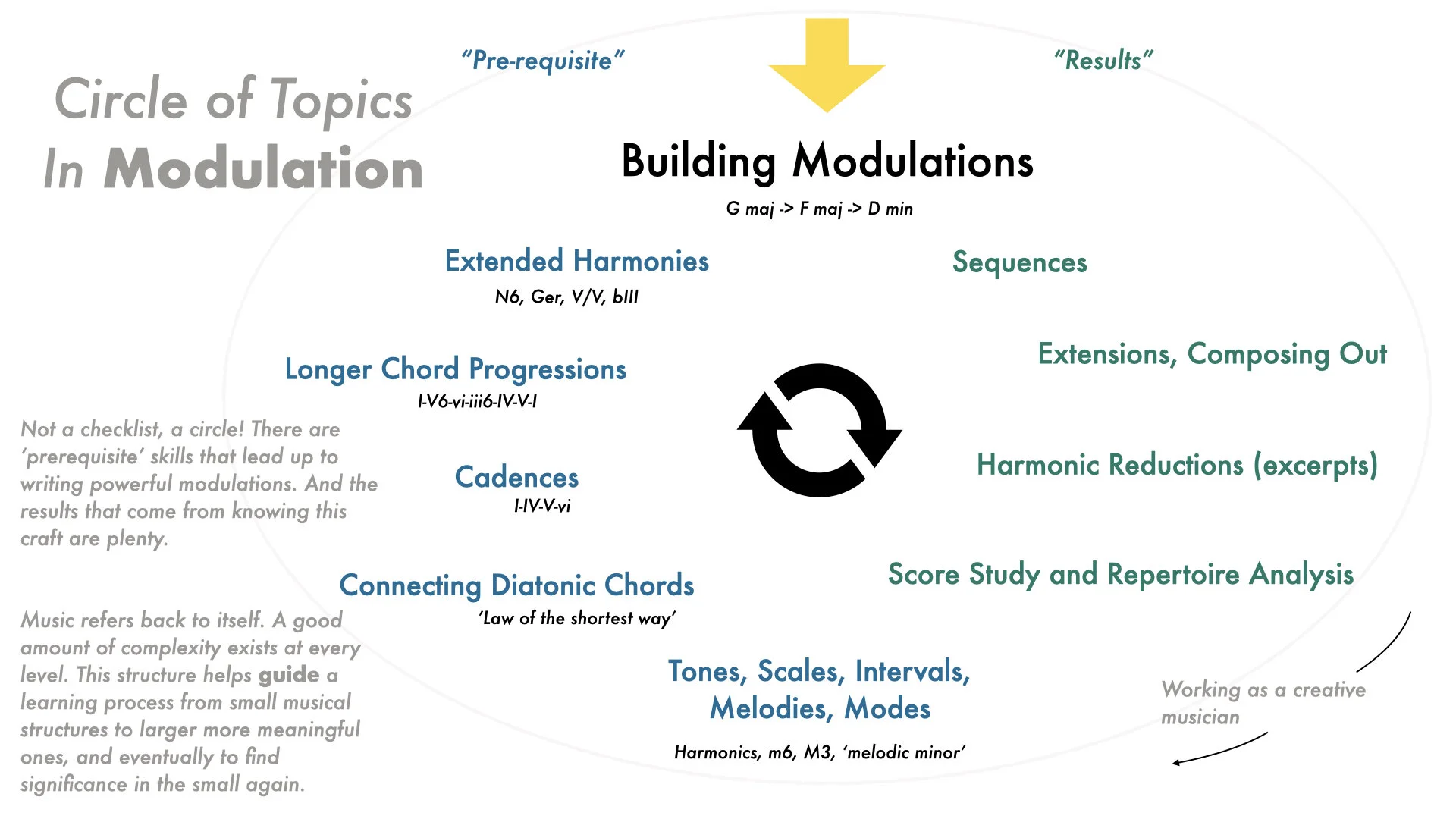
Tonal Harmony Workshop:
Composing and Performing Powerful Modulations
Gain a new understanding of the art of modulation and improve your tonal harmony. Enter your email for the free lessons, worksheets, and an invitation to join the class.
This workshop is for musicians who want a practical deep dive into one of the most effective means of expression in tonal music: key relations, or modulations. By the end of the class, you’ll be more creative and expressive in your harmony.
This chord progression begins in C and modulates to F. In the workshop, I’ll show you exactly how you can build your own expressive modulations from start to finish. When you can build one, you can build them all.
Note: IV6 is shorthand for IVadd6, or ii65, a second inversion ii7 chord. Labeling the seventh chord in this progression as a IVadd6 is more helpful than writing ii7 because it brings attention to the fifth between Bb and F, instead of the fifth between G and D. In a classical cadence we are used to hearing the upper (V) and lower (IV) fifth, which is why the ear places greater importance on the fifth between Bb and F while establishing F as the home key.
A 2-Hour Tonal Harmony Workshop.
Join the workshop mailing list to receive all of the worksheets and an invitation to the workshop.
Get worksheets, lessons, guides, and more for free before the workshop to improve your skills at harmony.
I never spam. Unsubscribe anytime.
If you like what you are learning leading up to the event, you are invited to get a ticket to the live workshop! Topics include what’s in the outline below. All the details are inside.
Sign up today 🎶
Why do a workshop on modulation?
In harmony lessons, classical musicians are presented with modulation exercises to practice key changes, and to apply tonal harmony skills such as chord connections and key relations. Exercises like, modulate from G major to D major using an E minor pivot chord. Modulation, therefore, is usually left as an exercise, and as a thing that happens in tonal music.
This workshop completely expands on the concepts of key relations and offers us a way to learn about music on a more holistic level through building more interesting and dramatic modulations to more distant keys on the circle of fifths by thinking about neutral fields of harmony. I teach a way of looking at harmony that makes being harmonically creative much easier. This develops our skill at part writing and helps us compose better for voices and instruments.
Tentative Outline


